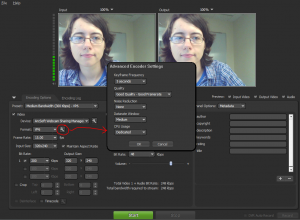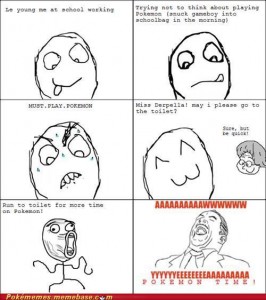A slightly late post this week, because I was working on CSCW revisions #blameclifflampe
There’s is big hullabaloo nowadays about higher education becoming increasings based on distance learning and online education and moving away from a more traditional model (e.g., UVA thing). Regardless of anybody’s personal opinion about it, online learning is a trend that is gaining momentum and it’s not going away anytime soon. But, I haven’t really heard people talk much about the K–12 model moving online, so that is the subject of my blog this week.
Specifically, I’m talking about the K12 Online School program, which is available as a supplement for home schooling and individual learning (nothing new there), but also as a free replacement for public school in many locations. Is this a good solution for some students in America’s struggling schools? You can learn the basic bits about K12 Online on the website, but I had some specific questions so, I requested more info and called one of their representatives. Here are some selected answers that I got (mostly paraphrased, I didn’t record the phone conversation):
- What is the difference between public and private versions of the program?
The public version is free but not available everywhere. In NJ (for example), the public version is only available for Newark high school students. In the public version of the program, students are required to log into the system for 5-6 hours a day, but the private version is much more controlled by the parent.
- What is the typical week like for a student?
There is a lot of flexibility and variety (especially in the private version), but generally, the teachers assigns homework and quizzes on Monday and the child has until Sunday night to finish all the work (it’s up to the parent/child how the work is divided). There are “live” instructional lessons where the teacher uses video and a digital whiteboard to explain a lesson. The number of these varies, but for example, an 8th grader would likely get 1 or 2 60-minute lessons per week per subject. Teachers also hold office hours over videochat, phone, or instant messaging (channel decided by student, teacher is available over all of these media) and are available basically 24-hour for questions over phone or email. The courses incude online (e.g., sample lesson) and offline (textbooks, workbooks, lab exercises) components and the school sends you everything you need (including things like a microscope for a biology lab). The curriculum (in the private version) is decided by the parent with the help of an academic advisor.
- What is the parent’s role in the day-to-day?
For K–8 students, the parent is advised to spend 3-5 hours a day assisting students with learning. This isn’t about teaching them, but more about motivating and mentoring the child in using the resources made available to them through K12 Online Academy. The parent has to be at home with the child to do this, but you might be able to make an arrangement with your school where the child does the K12 curriculum independently in the school.
- What happens when the child is struggling? Is there a style of learner that doesn’t do well with this system?
When the child is struggling, they can get extra attention from a teacher or an academic advisor, but much of responsibility falls to the parent. According to the person I spoke to, they have rarely seen somebody really struggle, usually “Kid that just don’t apply themselves. They don’t do as well” [this is a direct quote].
You may be surprised that I didn’t ask about socialization in an online school program. Actually, I’m less worried about that. The way kids socialize while home-schooled seems to be more similar to the way adults have to look for social contact — they join clubs, take some classes in classrooms, volunteer, go to organized events, become active in a church, etc. I’m not that worried about that part. You can read more about socialization in an online program here.
My main worry is that this approach will introduce greater division and stratification:
- Parents now have a lot more control over the child’s social circle. They may only want the child to socialize with people who go to the same church, for example. And, there’s not much the child can do about it. This means less mixing of diverse people.
- Parents now have a lot more control over what the child learns. They can select a curriculum that excludes foreign languages or evolutionary biology, for example. This means less exposure to diverse ideas.
- Parents now have a lot more responsibility over how the child learns, because they are the ones that motivate the learning. If the child’s parents are not that great at this or if they don’t know how to deal with specific learning or motivational problems, the child is stuck. There are fewer diverse sources of support to get help. This will increase the strength of the effect that educated parents tend to have educated students. Rich get richer.
- Even if this program is indeed awesome for a certain type of student, it may still be unavailable to them if (1) their state doesn’t have a public K12 online program and they can’t afford private and (2) if both of their parents work and cannot supervise them during the day. This may decrease opportunities available to families that cannot make ends meet without 2 working parents or single-parent families.
Do you think that an online school is a good option for K–12? What do you think are the big problems that need to be addressed for this to become a viable solution?


